The 29 Best-Ever Proteins for Weight Loss
You already know that eating protein is key when it comes to feeling satisfied with your meals and maintaining a weight loss effort. Protein helps build flubber-frying lean muscle mass, after all. But it seems that many of us have gotten into a rut, relying on just a few primary sources of the stuff. Not only can this cause taste bud fatigue, it can also deny your body of health-boosting nutrients found in protein-rich foods you’re overlooking.
To help you break free of your oh-so-boring grilled chicken and egg routine, we’ve compiled a list of the best-ever proteins for weight loss across every food category. Whether you’re a fan of fish, can’t deny your love of dairy or stick to a meat-free meal plan, we’ve got the best options for your waistline.
Read on to get in the know and be sure to pick a few of our suggestions up next time you head to the grocery store.
1
Spinach

Protein Payout: 1 cup (cooked), 41 calories, 5 grams of protein
Popeye’s favorite veggie is a great source of not only protein but also vitamins A and C, antioxidants and heart-healthy folate. One cup of the green superfood has nearly as much protein as a hard-boiled egg—for half the calories. Looking to get the biggest nutritional bang for your buck? Be sure to steam your spinach instead of eating it raw. This cooking method helps retain vitamins and makes it easier for the body to absorb the green’s calcium content. Add a handful to soups, omelets, pasta dishes and veggie stir-fries, or simply steam it and top with pepper, garlic, olive oil and a squeeze of lemon. And don’t feel like you have to double down on the greens. Spinach is one of the 10 greens healthier for you than kale.
2
Sun-Dried Tomatoes

Protein Payout: 1 cup, 139 calories, 6 g protein
Tomatoes are packed with the antioxidant lycopene, which studies show can decrease your risk of bladder, lung, prostate, skin, and stomach cancers, as well as reduce the risk of coronary artery disease. Just one cup of the sun-dried version will lend you 6 grams of satiating protein, 7 grams of fiber and ¾ of your RDA of potassium, which is essential for heart health and tissue repair. They’re also rich in vitamins A and K. Use them as a pizza topping, a tangy addition to salads, or snack on them right out of the bag.
3
Guava

Protein Payout: 1 cup, 112 calories, 4.2 g protein
The highest-protein fruit, guava packs more than 4 grams per cup, along with 9 grams of fiber and only 112 calories. With 600 percent of your DV of Vitamin C per cup — the equivalent of more than seven medium oranges! — the tropical fruit should merengue its way into your shopping cart ASAP. And while you’re at the store, be sure to pick up some of these other surprising high-protein foods.
4
Artichokes

Protein Payout: 1 medium vegetable, 60 calories, 4.2 g protein
Ghrelin is your body’s “I’m hungry” hormone, which is suppressed when your stomach is full, so eating satiating high-fiber and high-protein foods is a no-brainer. The humble artichoke is a winner on both counts: It has almost twice as much fiber as kale (10.3 g per medium artichoke, or 40 percent of the daily fiber the average woman needs) and one of the highest protein counts among vegetables. Boil and eat the whole shebang as a self-contained salad (why not add a little goat cheese and sun-dried tomatoes?), toss the leaves with your favorite greens and dressing, or peel and pop the hearts onto healthy pizzas and flatbreads.
5
Peas

Protein Payout: 1 cup, 118 calories, 8 g protein
It’s enough to make Popeye do a spit take: Despite their wimpy reputation, a cup of green peas contains eight times the protein of a cup of spinach. And with almost 100 percent of your daily value of vitamin C in a single cup, they’ll help keep your immune system up to snuff. Layer them into a mason jar salad or add them to an omelet to boost eggs’ satiating power. Speaking of omelets, check out these other fat-burning ways to eat eggs.
























![Eggs]()
![cottage cheese]()
![smoothies]()
![halibut]()
![sockeye salmon]()
![light tuna]()
![steak]()
![pork chops]()
![chicken breast]()
6
Grass-Fed Beef

Protein Payout: 4 oz strip steak, 133 calories, 26 g protein
When it comes to steak or burgers, go grass-fed. It may ding your wallet, but it’ll dent your abs. Grass-fed beef is naturally leaner and has fewer calories than conventional meat: A lean seven-ounce conventional strip steak has 386 calories and 16 grams of fat. But a seven-ounce grass-fed strip steak has only 234 calories and five grams of fat. Grass-fed meat also contains higher levels of omega-3 fatty acids, according to a study published in Nutrition Journal, which have been shown to reduce the risk of heart disease.
Concerned about your ticker? Keep it healthy by eating more of these foods that decrease your heart disease risk.
7
Bison

Protein Payout: 4 oz, 166 calories, 23 g of protein
While grass-fed beef is an excellent choice, bison’s profile has been rising in recent years, and for good reason: It has half the fat of and fewer calories than red meat. According to the USDA, while a 90 percent lean hamburger may average 10 grams of fat, a comparatively sized buffalo burger rings in at two grams of fat with 24 grams of protein, making it one of the leanest meats around. But wait, taking a chance on this unexpected meat will earn you two healthy bonuses: In just one serving you’ll get a full day’s allowance of vitamin B-12, which has been shown to boost energy and help shut down the genes responsible for insulin resistance and the formation of fat cells; additionally, since bison are naturally grass-fed, you can confidently down your burger knowing it’s free of the hormones and pollutants than can manifest themselves in your belly fat.
Speaking of belly fat, blast it away with the help of these six moves for six-pack abs from personal trainers.
8
Ostrich

Protein Payout: 4 oz patty, 194 calories, 29 g protein
Lower that eyebrow you’re raising. Ostrich meat is the rising star of the grill. While it’s technically red and has the rich taste of beef, it has less fat than turkey or chicken. A four-ounce patty contains nearly 30 grams of the muscle building nutrient and just six grams of fat. Plus, one serving has 200 percent of the daily recommended allowance of vitamin B-12. This exotic meat can also help whittle your middle: Ostrich contains 55 milligrams of choline, one of these essential nutrient for fat loss. And it’s not as hard to find as it sounds—ostrich is increasingly available in supermarkets around the country.
9
Pork

Protein Payout: 4 oz, 124 calories, 24 g protein
A longtime enemy of doctors and dieters, pork has been coming around as a healthier alternative of late — as long as you choose the right cut. Your best bet is pork tenderloin: A University of Wisconsin Study found that a three-ounce serving of pork tenderloin has slightly less fat than a skinless chicken breast. It has 24 grams of protein per serving and 83 milligrams of waist-whittling choline (in the latter case, about the same as a medium egg). In a study published in the journal Nutrients, scientists asked 144 overweight people to eat a diet rich in fresh lean pork. After three months, the group saw a significant reduction in waist size, BMI and belly fat, with no reduction in muscle mass! They speculate that the amino acid profile of pork protein may contribute to greater fat burning.
10
Halibut

Protein Payout: 3 oz, 77 calories, 16 g protein
You already knew fish was rich in protein but you might be surprised to learn that halibut tops fiber-rich oatmeal and vegetables in the satiety department. The Satiety Index of Common Foods, an Australian study published in the European Journal of Clinical Nutrition, ranks it the number two most filling food—bested only by boiled potatoes for its fullness factor. A separate Australian study that compared the satiety of different animal proteins found a nutritionally similar white fish (flake) to be significantly more satiating than beef and chicken; satiety following the white fish meal also declined at a much slower rate. Study authors attribute the filling factor of white fish like halibut to its impressive protein content and influence on serotonin, one of the key hormones responsible for appetite signals. Just make sure you avoid tilapia.
11
Wild Salmon

Protein Payout: 3 oz, 121 calories, 17 g protein
Don’t let salmon’s relatively high calorie and fat content fool you; studies suggest the oily fish may be one of the best for weight loss. (In fact, it makes our list of the fatty foods that will help you lose weight.) In one study, participants were divided into groups and assigned one of three equicaloric weight loss diets that included no seafood (the control group), lean white fish, or salmon. Everyone lost weight, but the salmon eaters had the lowest fasting insulin levels and a marked reduction in inflammation. Another study in the International Journal of Obesity found that eating three 5-ounce servings of salmon per week for four weeks as part of a low-calorie diet resulted in approximately 2.2 pounds more weight lost than following an equip-calorie diet that didn’t include fish. Wild salmon is leaner than farmed, which is plumped up on fishmeal; and it’s also proven to be significantly lower in cancer-linked PCBs. So go wild — literally. This is a protein-rich fish you don’t want to miss!
12
Light Canned Tuna

Protein Payout: 3 oz, 73 calories, 16 g protein
Tuna or to-not? That is the question. As a primo source of protein and docosahexaenoic acid (DHA), canned light tuna is one of the best and most affordable fish for weight loss, especially from your belly! One study in the Journal of Lipid Research showed that omega 3 fatty acid supplementation had the profound ability to turn off abdominal fat genes. And while you’ll find two types of fatty acids in cold water fish and fish oils—DHA and eicosapentaenoic acid (EPA)—researchers say DHA can be 40 to 70 percent more effective than EPA at down-regulating fat genes in the abdomen, preventing belly fat cells from expanding in size. But what about the mercury? Mercury levels in tuna vary by species; generally speaking, the larger and leaner the fish, the higher the mercury level. Bluefin and albacore rank among the most toxic, according to a study in Biology Letters. But canned chunk light tuna, harvested from the smallest fish, is considered a “low mercury fish” and can–and should!–be enjoyed two to three times a week (or up to 12 ounces), according to the FDA’s most recent guidelines.
13
Pacific Cod

Protein Payout: 3 oz, 70 calories, 15 g protein
Fish and chips won’t help you lose weight, at least not out of the fryer. But research suggests a regular serving of Pacific cod, the fish that’s typical of fish sticks, may keep you stick thin. One study in the journal Nutrition, Metabolism & Cardiovascular Diseasesfound that eating five servings of cod per week as part of a low-calorie diet for eight weeks resulted in an extra 3.8 pounds of weight loss compared to a diet with the same amount of calories but no fish. Researchers attribute the satiating and slimming properties to cod’s high protein content and amino acid profile, which can help regulate the metabolism. No wonder Captain Birdseye looks so smug!
14
Turkey

Protein Payout: Quarter-pound turkey burger, 140 calories, 16 g protein
Lean and protein-rich, turkey is no longer an automatic substitute for red meat–this bird deserves props on its own. A quarter-pound turkey burger patty contains 140 calories, 16 grams of protein and eight grams of fat. Additionally, turkey is rich in DHA omega-3 acids—18 mg per serving, the highest on this list—which has been shown to boost brain function, improve your mood and turn off fat genes, preventing fat cells from growing in size. Just make sure you buy white meat only; dark contains too much fat. And know that you’re doing your health a double solid by grilling at home: Restaurant versions can be packed with fatty add-ins to increase flavor. Not your problem, since it’s going straight from the grill to your plate (ideally with the best spices to burn fat and peppers mixed in).
15
Chicken

Protein Payout: 3 oz. cooked breast, 142 calories, 26 g protein
A 3 oz. cooked chicken breast contains only 142 calories and 3 grams of fat, but packs a whopping 26 grams of protein — more than half of the day’s recommended allowance. But the go-to protein can be a fail on the taste front. (Our casual poll on the taste of plain breast elicited answers ranging from “air you cut with a knife” to “wet sock.”) The good news: With just a little creativity, you can make it a savory post-gym dinner or an impressive date-night meal. Check out these 7 fat burning ways to make chicken for some culinary inspiration.
16
Eggs

Protein Payout: 1 egg, 85 calories, 7 g protein
Eggs might just be the easiest, cheapest and most versatile way to up your protein intake. Beyond easily upping your daily protein count, each 85-calorie eggs packs a solid 7 grams of the muscle-builder! Eggs also boost your health: They’re loaded with amino acids, antioxidants, and iron. Don’t just reach for the whites, though; the yolks boast a fat-fighting nutrient called choline, so opting for whole eggs can actually help you trim down. When you’re shopping for eggs, pay attention to the labels. You should be buying organic, when possible. These are certified by the USDA and are free from antibiotics, vaccines, and hormones. As for color, that’s your call. The difference in color just varies based on the type of chicken—they both have the same nutritional value, says Molly Morgan, RD, a board certified sports specialist dietician based in upstate New York.
17
Beans

Protein Payout: 1/2 cup, 109-148 calories, 7-10 grams of protein
Beans are good for more than just your heart. They’re loaded with proteins, antioxidants, vitamins and minerals that can benefit your brain and muscles, too. Not to mention, they digest very slowly, which can help you feel fuller, longer, and fuel weight loss efforts without causing feelings of deprivation. Look for easy-to-use, pre-cooked BPA-free varieties that come in a pouch or a box. Add them to soups and salads or mix them with brown rice and steamed vegetables to create a hearty—yet healthy—dinner. Big into snacking? Mix black beans with some salsa and corn, and serve with some whole grain crackers (just make sure they are one of our go-to healthy crackers for weight loss) in place of your favorite packaged dip.
18
Lentils

Protein Payout: 1 cup, 230 calories, 18 g protein
Here are some pretty amazing proportions: One cup of lentils has the protein of three eggs, with less than one gram of fat! Their high fiber content makes them extremely satiating, and studies have shown that they speed fat loss: Spanish researchers found that people whose diets included four weekly servings of legumes lost more weight and improved their cholesterol more than people who didn’t. Eat them on their own as a side or simmer them into a soup.
19
Peanut Butter

Protein Payout: 2 tablespoons, 191 calories, 7 grams of protein
This creamy spread is downright addictive. While eating too much peanut butter can wreak havoc on your waistline, a standard two-tablespoon serving provides a solid dose of muscle-building protein and healthy fats. According to a 2014 study published in The American Journal of Clinical Nutrition, consuming peanuts can prevent both cardiovascular and coronary artery disease — the most common type of heart condition. Look for the unsalted, no sugar added varieties without hydrogenated oils to reap the most benefits. If you’re tired of plain old PB&J sandwiches, try stirring the spread into hot oatmeal, smearing it on fresh produce, or blending it into your post-workout smoothie. And for some seriously slimming smoothie inspiration check out these 10 smoothie recipes for weight loss.
20
Sprouted Whole Grain Bread

Protein payout: Two slices, 138-220 calories, 8-12 g protein
Not all breads are carb bombs waiting to shatter your weight loss goals. This nutrient-dense bread is loaded with folate-filled lentils, protein and good-for-you grains and seeds like barley and millet. To boost the flavor of your slices, make a veggie sandwich overflowing with wholesome nutrients. On two slices of sprouted whole-grain bread combine tahini-free hummus, avocado slices, roasted red peppers, cucumbers, onions, spinach and tomatoes, one of the healthiest foods on the planet.
21
Teff

Protein Payout: 1/4 cup, 180 calories, 7 grams of protein
This nutty-flavored gluten-free grain may be small, but it packs a mighty nutritional punch. It’s loaded with fiber, essential amino acids, calcium and vitamin C — a nutrient not typically found in grains. To reap the benefits, trade your morning oatmeal in for a protein-packed teff porridge. Combine a half cup of teff with one a half cups of water and a pinch of salt in a medium saucepan. Let it come to a boil before turning the heat down to low and letting it simmer for 15 to 20 minutes. Remove from heat and top with apples, cinnamon and a dollop of natural peanut butter.
22
Triticale

Protein Payout: 1/4 cup, 161 calories, 6 grams of protein
While you may have never heard of this hearty whole grain before, it may become your new favorite. This wheat-rye hybrid packs 12 grams of protein per half cup and is also rich in brain-boosting iron, bloat-busting potassium, magnesium and heart-healthy fiber. Use triticale berries in place of rice and mix it with soy sauce, fresh ginger, cloves, shiitake mushrooms and edamame to make a healthy, Asian-inspired dish. If you prefer to firing up the oven to using the stove, use triticale flour in place of traditional flour in your baking.
23
Gruyere Cheese

Protein Payout: 1 oz, 117 calories, 8 g protein
Here’s an excuse for a wine-and-cheese hour: The schmancy Swiss cheese contains 30 percent more protein than an egg in one slice, plus one-third of your RDA of vitamin A. If you’re looking to indulge, keep your serving to the size of four dice, and moderate your vino to one glass for women, two glasses for men, to get the bad-cholesterol-lowering benefits of the antioxidant resveratrol. And better yet, stick to the #1 wine for rapid weight loss.
24
2% Greek Yogurt

Protein Payout: 7 oz, 150 calories, 20 g protein
Yogurt may be one of your key allies in weight-loss efforts. A study printed in the Journal of Nutrition found that probiotics like the ones found in creamy, delicious yogurt helped obese women lose nearly twice the weight compared to those who did not consume probiotics. Both sets of subjects were on low-calorie diets, but after 12 weeks, the probiotic poppers lost an average of 9.7 pounds, while those on placebos lost only 5.7. Bonus: the subjects who were given the good bacteria continued to lose weight even after an additional 12 weeks, an average of 11.5 pounds to be accurate! The group that didn’t get the probiotic boost? They maintained their 5.7-pound initial loss but didn’t trim down further. The good bacteria in probiotics can help ramp up your metabolism and improve your immune system, but it pays to be picky about your sources. Yogurt’s a great way to get a.m. protein and probiotics, but to get the healthiest yogurt you’ll have to read labels; most are packed with added sugars that exceed their protein levels. To speed up the process, use our indispensable guide to the best brand name yogurts for weight loss.
25
1% Organic, Grass-Fed Milk

Protein Payout: 8 oz, 110 calories, 8 g protein
Organically raised cows are not subject to the same hormones and antibiotics that conventional cows are; no antibiotics for them means no antibiotics for you. Grass fed cows have been shown to have higher levels of omega-3 fatty acids (good) and two to five times more CLA (conjugated linoleic acid) than their corn and grain fed counterparts. CLA contains a group of chemicals which provides a wide variety of health benefits, including immune and inflammatory system support, improved bone mass, improved blood sugar regulation, reduced body fat, reduced risk of heart attack, and maintenance of lean body mass. While skim milk may be lowest in calories, many vitamins are fat-soluble, which means you won’t get all the benefits of the alphabetical nutrients listed on your cereal box unless you opt for at least 1%.
26
Chia Seeds

Protein Payout: 1 oz, 138 calories, 5 g protein
One of the hallmarks of a balanced diet is to have a good ratio of omega-6 fatty acids to omega-3s. A 4:1 ratio would be ideal, but the modern American diet is more like 20:1. That leads to inflammation, which can trigger weight gain. But while eating a serving of salmon every day isn’t exactly convenient, sprinkling chia seeds—among the most highly concentrated sources of omega-3s in the food world—into smoothies, salads, cereals, pancakes or even desserts is as easy a diet upgrade as you can get.
27
Shelled Pumpkin Seeds

Protein Payout: 1 oz, 158 calories, 9 g protein
Dr. Lindsey Duncan, a nutritionist who’s worked with Tony Dorsett and Reggie Bush, is a big fan of pumpkin seeds. “A handful of raw pepitas or dry roasted pumpkin seeds can give you a natural jolt to power through a workout,” he says. “They’re a good source of protein, healthy fats, and fiber, keeping you feeling full and energized longer, and contain manganese, magnesium, phosphorus, and zinc, which provide additional energy support to maximize gym time.” Throw them into salads and rice dishes or eat them raw. Looking for more delicious ways to eat pumpkin? Check out these 8 amazing ways to eat pumpkin this fall!
28
Almonds

Protein Payout: 1 oz, 164 calories, 6 g protein
Think of each almond as a natural weight-loss pill. Combined with a calorie-restricted diet, consuming a little more than a quarter-cup of the nuts can decrease weight more effectively than a snack comprised of complex carbohydrates and safflower oil—after just two weeks! (And in this study of overweight and obese patients, after 24 weeks, those who ate the nuts experienced a 62 percent greater reduction in weight and BMI!) For optimal results, eat your daily serving before you hit the gym. Almonds, rich in the amino acid L-arginine, can actually help you burn more fat and carbs during workouts, a study printed in The Journal of the International Society of Sports Nutrition found.
29
Cashews

Protein Payout: 1 oz, 157 calories, 5 g protein
Cashews are a good source of protein, phosphorus, magnesium, calcium and copper, and shouldn’t be overlooked as one of your go-to nuts. Magnesium boasts a myriad of health benefits such as helping your body relieve various conditions like constipation, insomnia, headaches and muscle cramps, as well as regulating the immune system and supporting brain function. They also contain a good amount of biotin, which will help keep your locks shiny and lustrous.
Eggs
Protein Content: 6 g per 1 large egg
These white orbs are one of the most perfect high-protein foods at the supermarket: cheap, versatile, low-carb, and packed with branched-chain amino acids. Look for eggs fortified with extra omega-3 fatty acids to give your breakfast scramble an extra nutrition boost.
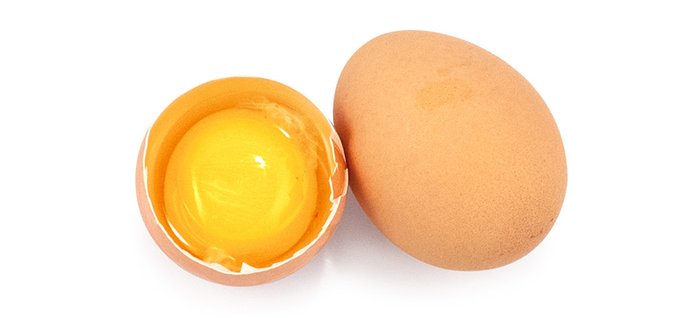
Hard-boiled eggs are one of the most portable protein foods. You can also make a shake with dried egg protein powder instead of whey.
High Protein Dairy
Greek Yogurt
Protein Content: 23 g per 8-oz. serving
Greek yogurt has become such a popular choice because it has twice as much protein as other types of yogurt. It's also rich in bone-building calcium and probiotic bacteria, which is great for gut health. Look for plain Greek yogurt to keep sugar—and your weight—in check.
Cottage Cheese
Protein Content: 14 g per 1/2-cup serving
Make cottage cheese your go-to protein for a healthy late-night snack. It's high in casein, a dairy protein that digests more slowly than whey. Slow-digesting protein feeds your muscles all night so they don't catabolize, and it keeps you from waking up starving at 3 a.m.
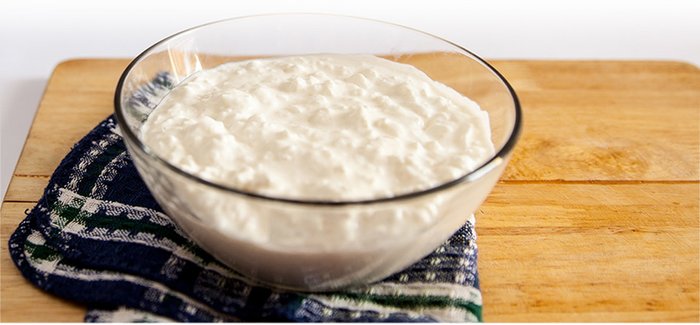
Swiss Cheese
Protein Content: 8 g per 1-oz. serving
Ounce for ounce, Swiss cheese provides more protein than other varieties commonly available in the supermarket, making it a muscle-friendly option for your sandwiches and burgers. If you're concerned about the calorie density of full-fat Swiss, low-fat versions have a protein-to-fat ratio of around 8-to-1 while still providing good flavor.
2-Percent Milk
Protein Content: 8 g per 1-cup serving
You could chug watery, flavorless skim milk, or you could enjoy the richer taste of 2 percent while getting a little extra fat to help you absorb the milk's vitamin D and get you closer to your macro targets.
Organic milk has the highest nutrient content, including protein and omega-3s.[1] Mix it with protein powder for a revved-up shake.
Whey Or Casein Protein Powder
Protein Content: 24 g per scoop, on average
Whey protein powder is clean, fast-digesting, and most of its calories come from protein. It's also convenient—just mix it with water in a shaker bottle. Reach for protein powder whenever you need quick, no-prep protein, like after a workout, for an on-the-go breakfast, or alongside a low-protein meal.
If you need something that'll help you hide from hunger a little longer, go for slow-digesting casein powder instead of whey. It won't hit your muscles as fast, but it can keep you full for hours and can help you lose fat without losing muscle mass.
You can also use protein powder to make high-protein pancakes. They make a great pre-workout or post-workout snack if you need a break from shakes.
If you're sensitive to artificial sweeteners, look for an unsweetened protein powder or one sweetened with stevia.
Smoothies
Protein Content: 16 g per 1-cup serving, on average
Up your protein-shake game by blending casein or whey protein powder into a smoothie with fruit for its vitamin content. You can also buy premade smoothie drinks, but make sure they have a substantial dose of protein (at least 20 grams for a 2-cup bottle) and not just fruit, which can send you into sugar overload.
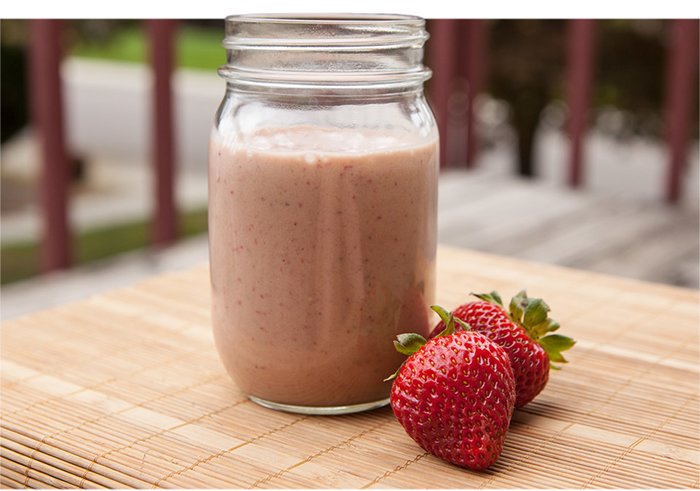
To make a plant-based smoothie, substitute a vegan protein powder in place of animal-based casein or whey. A blend of rice protein and pea protein is a good option for muscle growth.
Frozen Greek Yogurt
Protein Content: 6 g per 1/2-cup serving
Frozen Greek yogurt is frosty and creamy like ice cream, but contains about twice as much high-quality protein. Compare brands and look for those with the lowest sugar levels (or make it yourself). Some brands actually list fruit before sugar in the ingredient list, which is a plus.
High Protein Seafood
Yellowfin Tuna
Protein Content: 25 g per 3-oz. serving
This meaty swimmer delivers a boatload of easily digested, high-quality protein. You'll also benefit from the healthy amount of vitamin B and the potent antioxidant selenium, making it a great nutrition choice.When possible, look for troll- or pole-caught tuna, which are considered the most sustainable options.
Halibut
Protein Content: 23 g per 3-oz. serving
Among white fish species, halibut reigns supreme when it comes to the protein you need to build muscle like a champ. Each 3-ounce serving also has a mere 2 grams of fat, making halibut an even better catch of the day.Pacific halibut is generally considered a more sustainable choice than Atlantic.
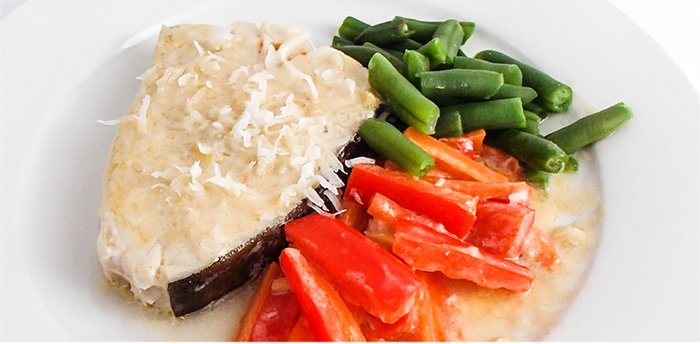
Octopus
Protein Content: 25 g per 3-oz. serving
An increasing number of fishmongers are now offering up this seafood choice. So if your goal is to pack on granite-dense muscle, you'd be a sucker not to reel it in for its protein windfall.Frozen octopus actually has an advantage over fresh because the freezing process helps tenderize the meat.
Sockeye Salmon
Protein Content: 23 g per 3-oz. serving
Not only does wild salmon like sockeye taste better than its farmed cousin, it also supplies more protein. In addition, you'll reap the benefits of its plethora of fat-fighting long-chain omega-3 fatty acids. Look for salmon with the skin still intact, as it provides added flavor during cooking.
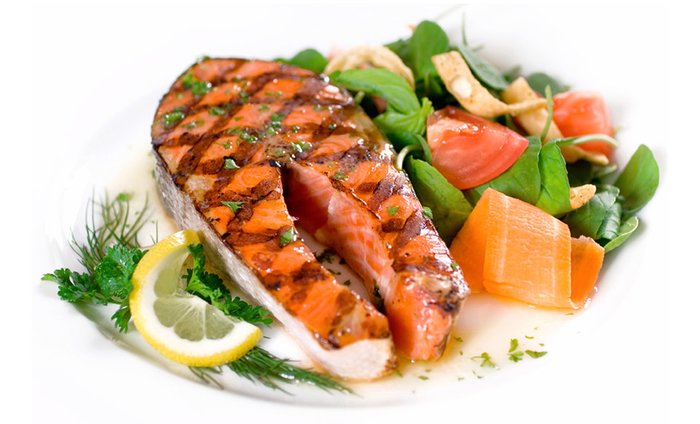
Tilapia
Protein Content: 21 g per 3-oz. serving
Commonly available at most fish markets, protein-packed tilapia is a mild-tasting fish that will keep your muscles well fed.Look for American-farmed tilapia, which is a safer fish choice than tilapia imported from Asia.
Anchovies
Protein Content: 24 g per 3-oz. serving
Ounce for ounce, anchovies are the surprising winners when it comes to canned protein. Because of their size, they also don't accumulate toxins the same way that bigger species do. To reduce their saltiness, soak anchovies in water for 30 minutes, then drain and pat dry.
Light Tuna
Protein Content: 22 g per 3-oz. serving
Frugal shoppers, rejoice! Less-pricey canned light tuna actually provides a little more protein than more expensive canned white tuna. To save yourself some calories sourced from lackluster vegetable oils, opt for water-packed tuna.
Canned tuna is a very low-calorie food. Combine it with something fatty, such as olives, to stay full longer.
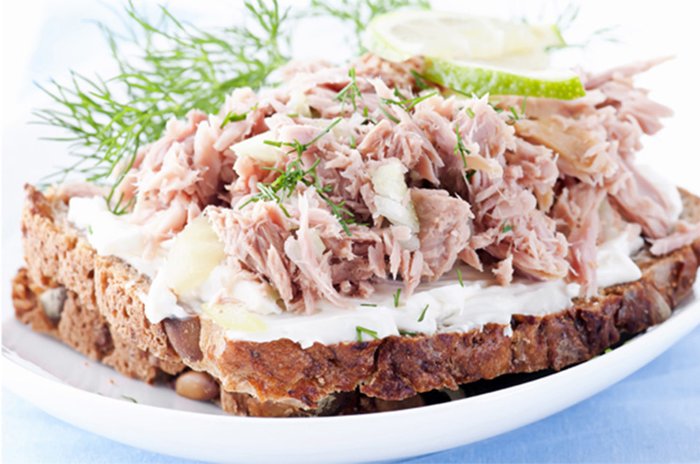
Sardines
Protein Content: 21 g per 3-oz. serving
Humble canned sardines are making a comeback! This high-protein fish is full of omega-3 fats and vitamin D, and is relatively low in mercury since it's small and low on the food chain. Try stirring them into mashed potatoes or cauliflower to cut their strong taste.
High Protein Meats
Steak (Top Or Bottom Round)
Protein Content: 23 g per 3-oz. serving
These leaner cuts of steak provide a fantastic 1 gram of protein for every 7 calories; rib eye, on the other hand, delivers roughly 1 gram of protein for every 11 calories. Plus, round steak is considered one of the more economical cuts. Leaner cuts of steak like round and loin will become drier than the Sahara with overcooking, so prepare them quickly over high heat to medium-rare.
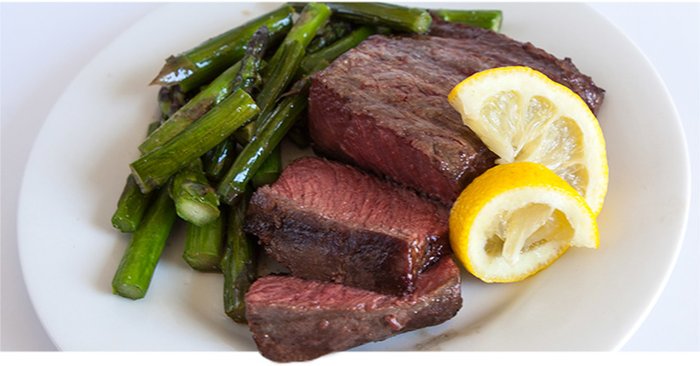
Ground Beef (90% Lean)
Protein Content: 18 g per 3-oz. serving
Using 90 percent ground beef provides just the right amount of fat so your burgers and meatloaf won't taste like cardboard. Beyond raising your protein intake, this red meat is also a good source of the almighty creatine.If you have some extra cash, opt for grass-fed beef, which is more nutrient-dense than its factory-farm counterparts.[2]
Pork Chops (Boneless)
Protein Content: 26 g per 3-oz. serving
The bounty of amino acids in easy-to-prepare pork chops gives you more than enough of an excuse to pig out on them.Pro tip: Soaking your chops in brine can yield more tender meat. Submerge the meat in a brine made with a 1/4 cup of salt for every 4 cups of water, and chill for 30 minutes to 2 hours.
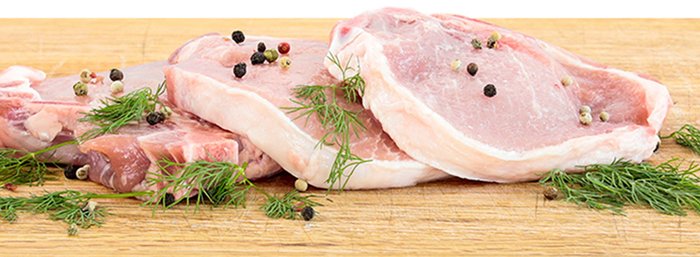
Chicken Breast (Boneless And Skinless)
Protein Content: 24 g per 3-oz. serving
This bodybuilding and weight-loss staple is a better protein source than other poultrycuts, which is why it should remain a constant presence in your shopping cart. To save money, stock up on this staple when it's marked down for quick sale.
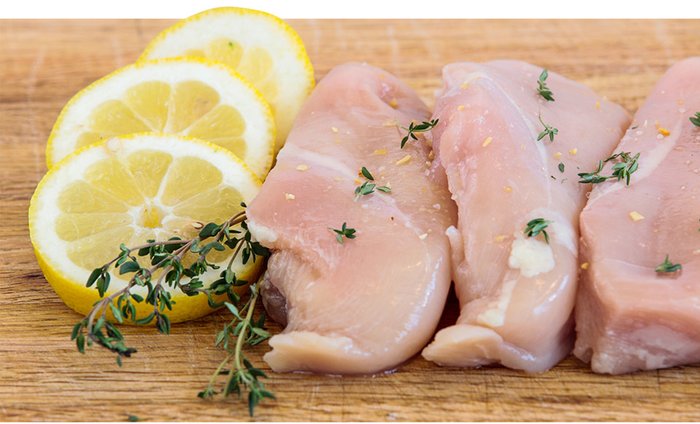
Turkey Breast
Protein Content: 24 g per 3-oz. serving
As with chicken, this big bird can flood your muscles with protein while keeping the calorie count low. Like pork chops and chicken breast, turkey breast can benefit from a pre-cook brining. If you're concerned about antibiotic use in large-scale poultry farming, you can look for turkey breast labelled "antibiotic-free."
Corned Beef
Protein Content: 24 g per 3-oz. serving
The protein in corned beef is high-quality and tastes awesome.Try sautéing corned beef with chopped vegetables and serve it over rice, or pile it on rye with plenty of mustard.
Canned Chicken
Protein Content: 21 g per 3-oz. serving
Pop the lid on ground white chicken meat to instantly add a shot of high-quality protein to your sandwiches and salads. Treat it the same way you would canned tuna. Compare brands, looking for those that deliver lower amounts of sodium so you don't pack on water weight.
Roast Beef
Protein Content: 18 g per 3-oz. serving
Roast beef is leaner than you'd think, and higher in amino acids than other deli-counter picks. As with steak, pasture-raised roast beef is more nutritious. Make a roast beef sandwich with spinach and red onions, or just snack on it as-is.
Canadian Bacon
Protein Content: 15 g per 3-oz. serving
Canadian-style bacon is a better high-protein food than regular bacon since it has about six times less fat. And yes, we just gave you permission to eat bacon.
Chorizo
Protein Content: 21 g per 3-oz. serving
Looking for good high-protein foods for breakfast? This seasoned pork sausage can turn scrambled eggs into a flavor-packed meal. It's also great for lunch or dinner in pasta dishes, soups, and salads. Spanish chorizo is cured, so it doesn't need to be cooked before eating, but Mexican chorizo does.
Pepperoni
Protein Content: 18 g per 3-oz. serving
The stellar amount of protein in pepperoni makes it a surprisingly healthy topping for pizza or salad. Sodium levels can vary widely, so compare brands and look for options with the lowest amount.
Roasted Turkey Breast
Protein Content: 18 g per 3-oz. serving
Sliced turkey is an easy way to get a lot of nearly fat-free protein, so pile it high. Steer clear of flavored turkey and other deli meats to avoid bringing home stuff you don't need, like salt, sugar, and lab-made flavorings.
Beef Jerky
Protein Content: 13 g per 1-oz. serving
Cleaning up your diet might mean saying goodbye to potato chips and microwave popcorn, but you can still enjoy jerky for a salty treat that doesn't derail your goals. Keep some in your desk at work for an afternoon snack. Look for healthier brands that are free of MSG and nitrites.
High Protein Plant-Based Foods
Navy Beans
Protein Content: 20 g per 1-cup serving
Heart-healthy beans are a fantastically cheap vegetarian protein source, and of the most commonly available canned legumes, navy beans lead the way. They're also rich in fiber, which is important for healthy eating.
Mash navy beans with garlic and lemon as a hummus alternative.
Dried Lentils
Protein Content: 13 g per 1/4-cup serving
Inexpensive dry lentils are a sure-fire way to ramp up your intake of protein, fiber, and a range of vital minerals. Unlike other dried beans, lentils don't require an annoying presoak. Simply simmer until tender, about 20 minutes. For a nutritious lunch, toss cooked lentils with chopped chicken breast, diced vegetables, and a lemon vinaigrette.
Peanut Butter
Protein Content: 8 g per 2-tbsp serving
Though not as trendy as other nut butters like almond, peanut butter still leads the way in the protein department. Make sure to watch labels for sugar, though. Natural versions made from just peanuts are best—some stores even let you grind your own.
If you're working to get your weight in check, look for peanut butter powder, which has less fat but the same protein content. You can even use the powder for baking.
Mixed Nuts
Protein Content: 6 g per 2-oz. serving
Nuts like peanuts, cashews, and almonds make for a crunchy way to add more protein and healthy unsaturated fats to your diet. Keep a can in your glove compartment for hunger emergencies. If you're watching your sodium intake, look for packages labelled "unsalted".
Bean Chips
Protein Content: 4 g per 1-oz. serving
If you're craving crunchy chips, you'll be hard pressed to find a better option than the ones made with protein-rich black beans. For bonus points, use them as a delivery vessel for a homemade Greek yogurt dip.
Tofu
Protein Content: 12 g per 3-oz. serving
If you're looking to go meat-free, slabs of tofu can fill you up with soy protein. Slices of firm tofu work well in stir-fry, or slap them on the grill to infuse them with some smoky flavor. A good marinade goes a long way. You can even make a smoothie with tofu instead of protein powder.
Edamame
Protein Content: 8 g per 1/2-cup serving
Another great vegetarian option, these nutrient-packed green soybeans will give your diet a boost of plant protein, fiber, vitamins, and minerals.To avoid snack boredom, prepare shelled, frozen edamame according to package directions, then season with fresh lemon juice, smoked paprika, and a pinch of salt.
Green Peas
Protein Content: 7 g per 1-cup serving
While protein is not abundant in most vegetables, green peas contain enough that you'll want to keep a bag stashed in your freezer at all times. They're also high in fiber, so they help manage your weight and cravings.
Wheat Germ
Protein Content: 6 g per 1-oz. serving
The wheat grain is made up of three components—endosperm, bran, and germ. The germ is the most nutrient-dense part and includes notable amounts of plant-based protein. You can use it to add a protein boost to your oatmeal, pancakes, and even shakes.
Soba Noodles
Protein Content: 12 g per 3-oz. serving
Consider using these buckwheat Japanese-style noodles for your pasta nights since they are a better protein source than most wheat-based noodles. Even better, they cook in about half the time as whole-wheat pasta.To remove the excess starch that can make the noodles gummy, rinse cooked soba after draining.
Quinoa
Protein Content: 8 g per 1-cup serving
Among whole grains, South American quinoa (technically a seed) is a rarity in that it contains a full arsenal of essential amino acids, meaning that it's a complete protein with muscle-building potential.Toasting quinoa in a dry skillet or saucepan before simmering it in water can enhance its natural nutty flavor.

No comments